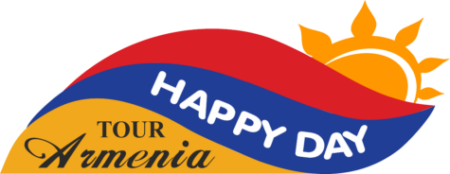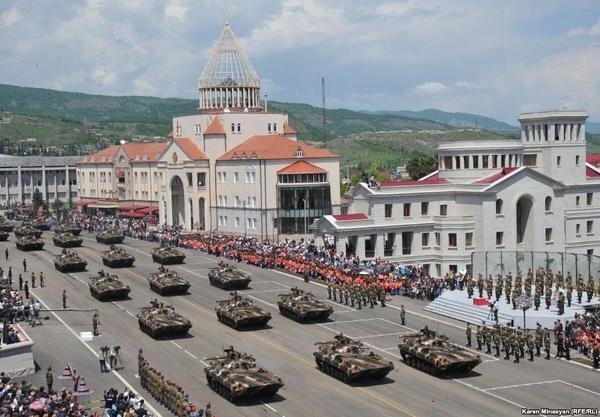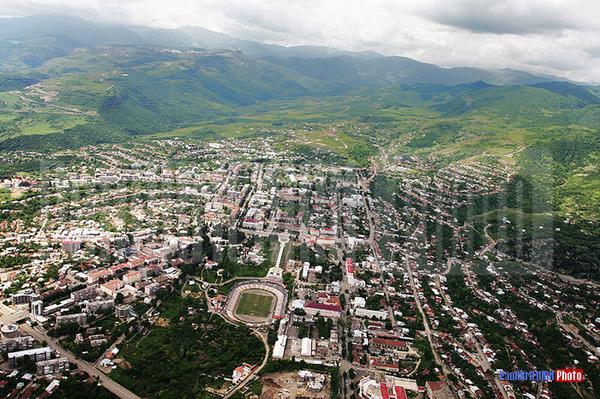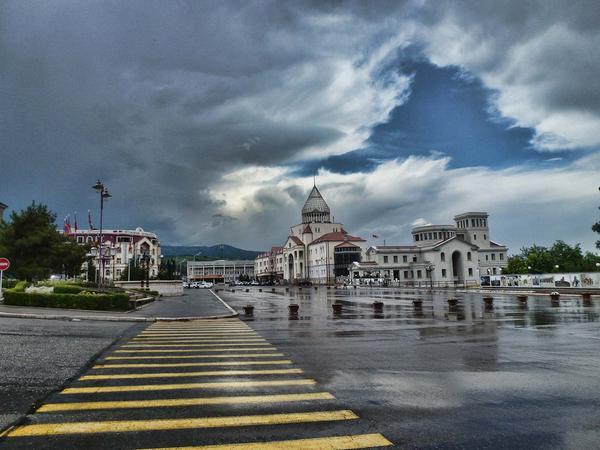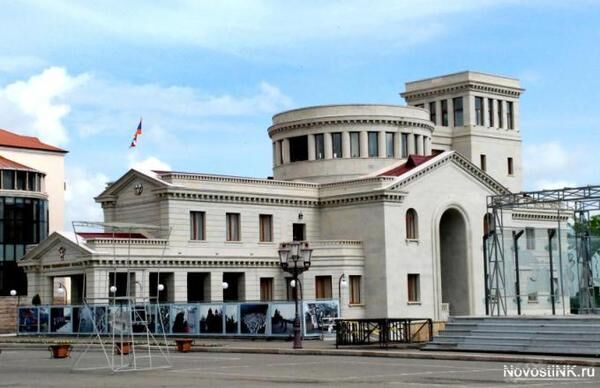In the Middle Ages, at the place of present-day Stepanakert was a settlement called Vararakn. The settlement was named so in honour of a big spring that flowed through it. The name derives from the Armenian word «Vararakn», which means a «full-flowing spring», and a coaching inn has been kept miraculously up to now.
The accomodation of staff and barracks for the Caucasian cavalry divisions were erected in the South Caucasus when it was annexed by Russia in 18th century. The settlement received an informal name of «Shtab», from the Russian «Staff». Stepanakert became a small city with a mixed Armenian-Russian population, schools, Armenian and Russian churches, public buildings, hotels and profitable houses by the end of the 19th century.
The settlement became the main city of Artsakh after the formation of the USSR and was named Stepanakert in honour of Stepan Shahumyan, head of the legendary commune of Baku. Alexander Tamanyan — the outstanding Armenian architect, who also designed the city plan of Yerevan, along with other Armenian architects created a plan for reorganization of the city. Stepanakert was a typical regional center with a several large industrial enterprises, a pedagogical institute, agricultural and technical colleges, music and medical schools, a dramatic theatre, museums of local lore and history during the Soviet times.
The complex was constructed in the centre of the city in the 1960s , it included the Lenin Square (now called «Veratsnund», or «Rebirth») and the building of the regional committee (now the Government building of RMK). Here were taking place the continuous meetings in 1988 , participants of which demanded the annexation of Mountainous Karabakh to Armenia.
Many ancient constructions representing remarkable samples of Armenian national dwellings have been preserved in the city. Walking in the silent streets of this old city, where some houses are transformed into shops and trading posts, tourists feel the colour of an Armenian city from the late 19th or early 20th century.
Stepanakert is surrounded by mountains and woods. It is a fine place for a vacation. Though the city is not large, there are many picturesque places, small green squares and cosy courtyards. The heart of Stepanakert is the Veratsnund (Rebirth) square with the Presidential palace, buildings of the Parliament, the Government and the Palace of Youth. The square smoothly becomes the avenue of Enamoured, with its ladder decorated by lanterns in the form of sculptures of grooms and brides, leading to the stadium. The square ends with a green park with fountains and benches, fondly named «Pyatachok» by local residents, because of its round form. In the evenings the «Veratsnund» square with its unique illumination and laser show serves as the main place of promenade for the local residents and visitors of the capital. Various concerts and dramatic performances are also take place here.
Visitors to Stepanakert can also visit the park of Culture with numerous winter and summer cafes and roundabouts, which mainly function during the warm season.
In the center of the capital there are many museums including the state historical museum and the local folklore museum, which keep unique exhibits about Artsakh’s history. There is also the museum of victim soldiers called «Azatamartikner» (soldier-liberators) and the museum of missing soldiers. The drama theatre is located on a site where an Armenian church functioned, and the Artsakh state university is also nearby. Numerous restaurants and cafes can also be found in the center.
The main street of Stepanakert is Azatamartikneri (soldier-liberators) boulevard, where are situated modern apartment buildings, supermarkets, minimarkets, boutiques and souvenir shops where you can make some memorable purchases.
One of the most picturesque locales of Stepanakert is the central market, which represents an original combination of the fair of industrial goods and agricultural production. Visitors feel as though they are in a real noisy and colourful market of the Eastern world.
One of the most memorable places in the city is the memorial park of lost soldiers. The first burial places here appeared during the Second World War, but for the inhabitants of Stepanakert the memorial is associated with the victims fallen in the battles of 1990’s for the Karabakh Independence and Freedom. Also in the park You can see the headstone of Arthur Mkrtchyan who fought in the 1988 war, a monument to the victims of the Sumgait tragedy (1988) and a sculptural composition symbolizing grief for the victims of the earthquake in Spitak city.
Another place of pilgrimage for tourists has become the eponymous park of Ashot Ghulyan , in honor of the hero of the Karabakhian. The Artsakh Tourism center is also located near that park.
The symbol of Stepanakert and of all of Artsakh is the monument «We and our mountains», called tenderly by the inhabitants «Papik-Tatik» (the Grandfather and the Grandmother), which is built on a high hill near the entrance to the capital. The piece of art created by the sculptor Sargis Baghdasaryan and architect Jury Hakobyan symbolizes an ineradicable dedication of the Artsakh people to life and family values. The old man and old woman are dressed in national clothes and sitting on the top of the hill as if they rooted on the mountain. Thus they stand as the symbols of the Kharabakh people’s patriotism. The sculpture is also devoted to the centenarians of Artsakh.
